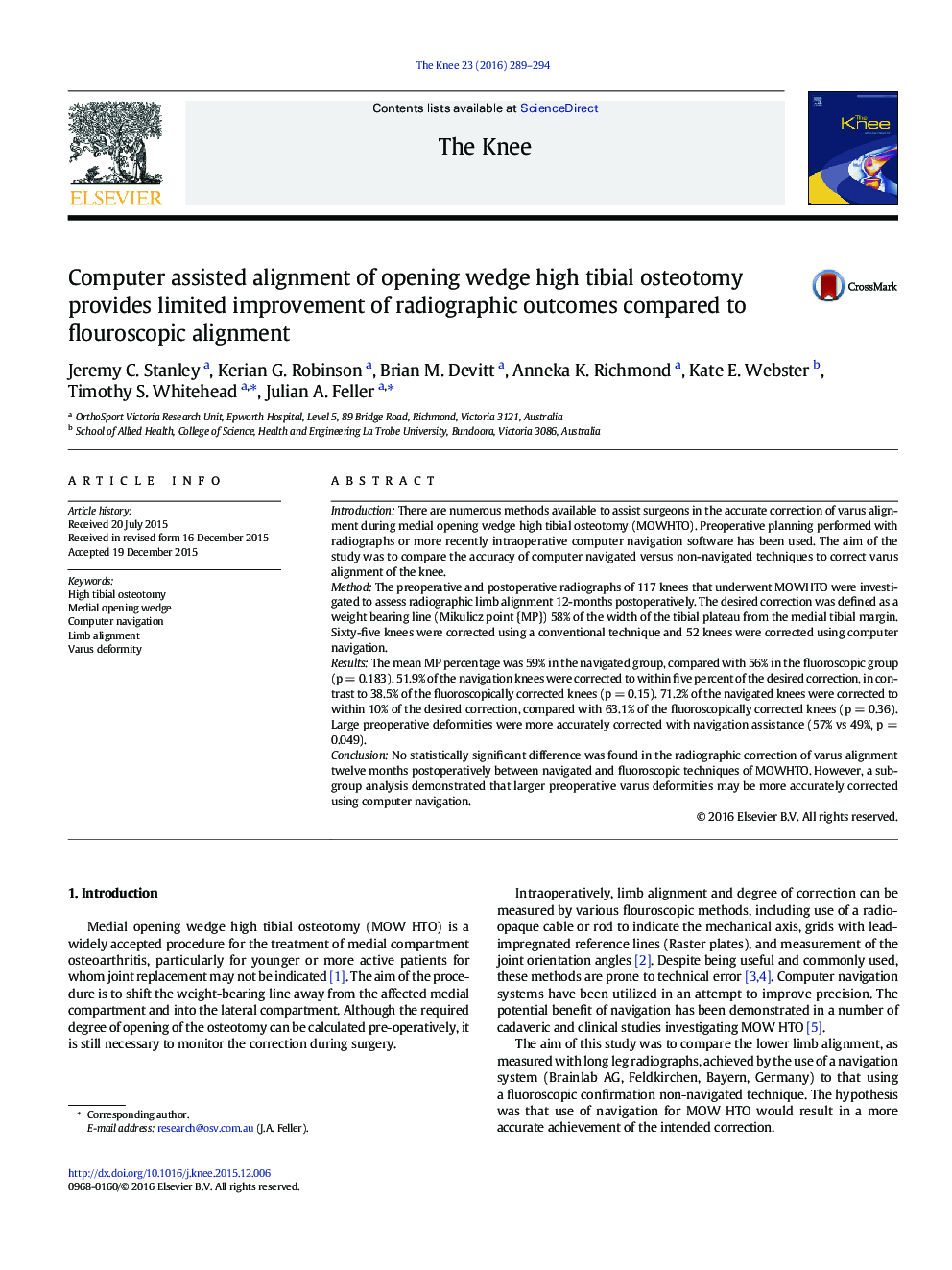| Article ID | Journal | Published Year | Pages | File Type |
|---|---|---|---|---|
| 4077294 | The Knee | 2016 | 6 Pages |
•Radiographic and navigated correction of varus knee deformity was investigated.•The weight bearing line was corrected by way of medial wedge high tibial osteotomy.•Navigation showed a small effect on the spread of results around a desired target.•Navigation improved accuracy for patients with large preoperative varus deformity.
IntroductionThere are numerous methods available to assist surgeons in the accurate correction of varus alignment during medial opening wedge high tibial osteotomy (MOWHTO). Preoperative planning performed with radiographs or more recently intraoperative computer navigation software has been used. The aim of the study was to compare the accuracy of computer navigated versus non-navigated techniques to correct varus alignment of the knee.MethodThe preoperative and postoperative radiographs of 117 knees that underwent MOWHTO were investigated to assess radiographic limb alignment 12-months postoperatively. The desired correction was defined as a weight bearing line (Mikulicz point {MP}) 58% of the width of the tibial plateau from the medial tibial margin. Sixty-five knees were corrected using a conventional technique and 52 knees were corrected using computer navigation.ResultsThe mean MP percentage was 59% in the navigated group, compared with 56% in the fluoroscopic group (p = 0.183). 51.9% of the navigation knees were corrected to within five percent of the desired correction, in contrast to 38.5% of the fluoroscopically corrected knees (p = 0.15). 71.2% of the navigated knees were corrected to within 10% of the desired correction, compared with 63.1% of the fluoroscopically corrected knees (p = 0.36). Large preoperative deformities were more accurately corrected with navigation assistance (57% vs 49%, p = 0.049).ConclusionNo statistically significant difference was found in the radiographic correction of varus alignment twelve months postoperatively between navigated and fluoroscopic techniques of MOWHTO. However, a subgroup analysis demonstrated that larger preoperative varus deformities may be more accurately corrected using computer navigation.
